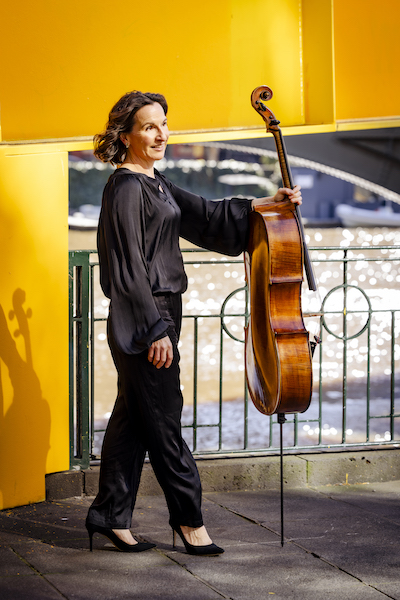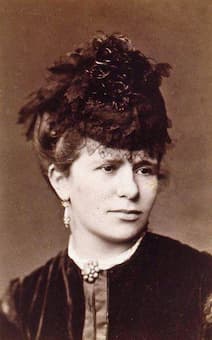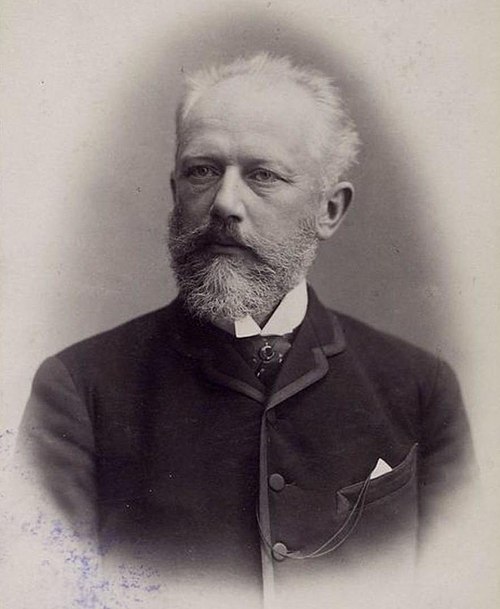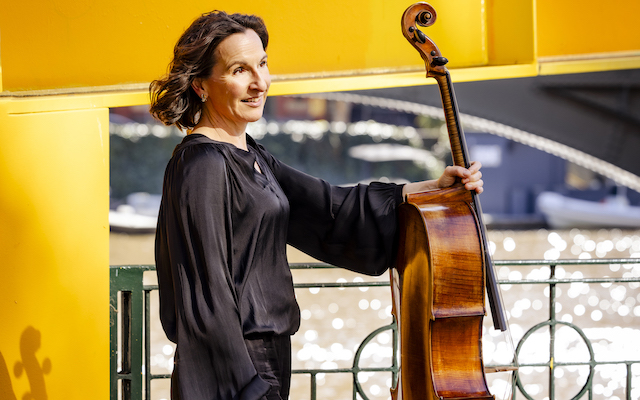The concert opens with a signature work by Lili Boulanger, a crucial figure in the 20th century Parisian music scene. Titled D’un matin de printemps (‘Of a spring morning’), it is a lush and melodious evocation of reawakening after winter. Boulanger’s compatriot, composer Marie Jaëll, is receiving renewed attention in recent years – partly for her lyrical Cello Concerto, written in 1882, and thought to be the first cello concerto composed by a woman. This performance by Melbourne cellist Zoe Knighton will be the Australian premiere. The concert ends with one of the great works of Romanticism, Tchaikovsky’s passionate Fourth Symphony.
Due to unforeseen circumstances, Leonard Weiss is unable to conduct today’s concert. We are delighted to welcome conductor David Le Guen.
The Music
Lili Boulanger
D’un matin de printemps
Marie Jaëll
Concerto for Cello
Tchaikovsky
Symphony No.4
Zoe Knighton

Zoe is a founding member and Artistic Director of Flinders Quartet, one of Australia’s finest chamber ensembles. The group has commissioned many works, been nominated for an ARIA for best classical album and continues to be a champion of Australian Chamber music. “Flinders Quartet…whose players give such care and unanimity of musical thought to Australian Chamber Music” Peter McCallum, Sydney Morning Herald
Zoe started the cello at the age of 9 with Jill Kahans before learning from Christian Wojtowicz, Michel Strauss (Paris) Nelson Cooke, and Angela Sargeant, she is now in demand as chamber coach and teacher at various institutions.
She has released 11 CDs on the MOVE label, 7 with duo partner Amir Farid and been praised for her “thrilling tenor sound” and “many technical demands carried off with ease”. (Limelight magazine) “She radiates confidence in her work and participates with personality and no little finesse.”… “Well worth hearing for the pleasure given through this player’s familiar warmth and honesty of musical character.” Clive O’Connell. Together with Farid, they have performed and broadcast widely and gave their Carnegie Hall debut in April, 2023.
Zoe is artistic patron of Resonance String Ensemble in Woodend and plays on a 2020 cello made by Australian instrument maker Rainer Beilharz and a 1780 cello by Benjamin Banks. In order to maintain conversations with her children, she finds herself a proud supporter of Hawthorn Football Club, Westage Imperial and Footscray Hawks basketball teams.
About The Music
Lili Boulanger D’un matin de printemps

Lili Boulanger (1893 – 1918) has attracted notice in different ways. She was the first woman to win one of the most prestigious competitions for composers in France, but her life was one of the saddest – she died at the age of 24 from a long-term respiratory illness. Both her parents were musicians and composer Gabriel Faure a regular visitor to the house. Her older sister Nadia was also a composer, though known more for her later mentoring of a range of composers, including Aaron Copland and Astor Piazzolla. D’un matin de printemps (Of a Spring Morning) and a companion piece, D’un soir triste (Of a sad evening) were composed in the last year of Lili Boulanger’s life, with Nadia helping to complete the orchestration. Both works are admired for their use of colour and harmony.
D’un matin de printemps is a short work, but requires a substantial number of instruments – harp, contrabassoon, celeste as well as a full symphony orchestra – as if Lili Boulanger was determined to use every voice available. Woodwinds feature prominently, alongside lush string passages. The work moves between the bright call of solo wind melodies and a more mysterious texture created by the strings and celeste.
Marie Jaëll Concerto for Cello

Marie Jaëll (1846 – 1925) was a French pianist, composer and educator. She studied composition with Saint-Saens and Lizst, was an acclaimed concert pianist, and as a teacher, introduced a radically new approach to traditional piano methods. As a performer, she was held in high regard by Saint-Saens who dedicated his first piano concerto to her; he also introduced her to the Society of Music Composers in France. Her compositions include works for piano, voice, string ensembles and concertos. After suffering from tendonitis as a pianist, she studied neuroscience and developed a pedagogic approach that linked the act of creating music with aspects of physiology. One of her students was the philosopher and organist Albert Schweitzer.
The cello concerto was composed in 1882. Over the following ten years, it became popular and was performed by many illustrious cellists of the day. But at the start of the 20th century, it fell into oblivion and has only recently been recovered. The manuscript has three movements, along with sketches for a fourth. The version at this concert consists of the original three movements. The work has been described as ‘fresh and captivating’ as well as ‘contemplative’. The solo cello has a virtuoso role, demanding heightened technique and expression from the player; the orchestra has an accompanying role that allows the soloist to shine. The work draws on musical ideas from the ‘New World’ and may bring Dvorak’s cello concerto to mind. But it should be noted that Dvorak’s work was written later, in 1894.
Tchaikovsky Symphony No 4.

Pyotr Tchaikovsky (1840-1893) is one of the most well-known and admired composers in the western tradition. He was the first Russian composer to win an international reputation, particularly for his ballet music such as Swan Lake and The Nutcracker, but he also wrote operas, symphonies and concertos. As a child, Tchaikovsky was encouraged to develop an early talent and interest in music, but his parents sent him – at the age of 10 – to be trained for the civil service. This separation from his family is regarded as the first of several personal traumas in Tchaikovsky’s life. But it put him on the spot to benefit from the opportunities to study music that developed at this time in Russia and he became one of the first students at the newly opened St Petersburg Conservatory in 1862.
The Symphony no 4 was written between 1877 and 1878. It is sometimes called the ‘Fate’ symphony, partly as Tchaikovsky himself wrote at the time of composing it that the opening call by the horns constituted ‘the kernel, the quintessence of the whole symphony … the fatal power which prevents one from attaining the goal of happiness … There is nothing to be done but to submit to it and lament in vain.” The symphony is certainly a work in which emotion leaps from the page, as melodies sing, rhythms collide, and marches jostle against more pastoral passages. The symphony has four movements, including the famous third movement in which the strings play pizzicato throughout. The second opens with the oboe, the theme taken by other instruments into an elegant dance. The finale is a whirl of scales and chords, as notes fly from the players’ fingers in quick response. The ‘Fate’ motif of the first movement returns, to complete the journey. Early reception to the symphony was not entirely positive with an American reviewer in 1890 calling it ‘A Sleigh Ride Through Siberia’. Tchaikovsky himself conducted the British premiere shortly before his death, with audiences applauding every movement.

